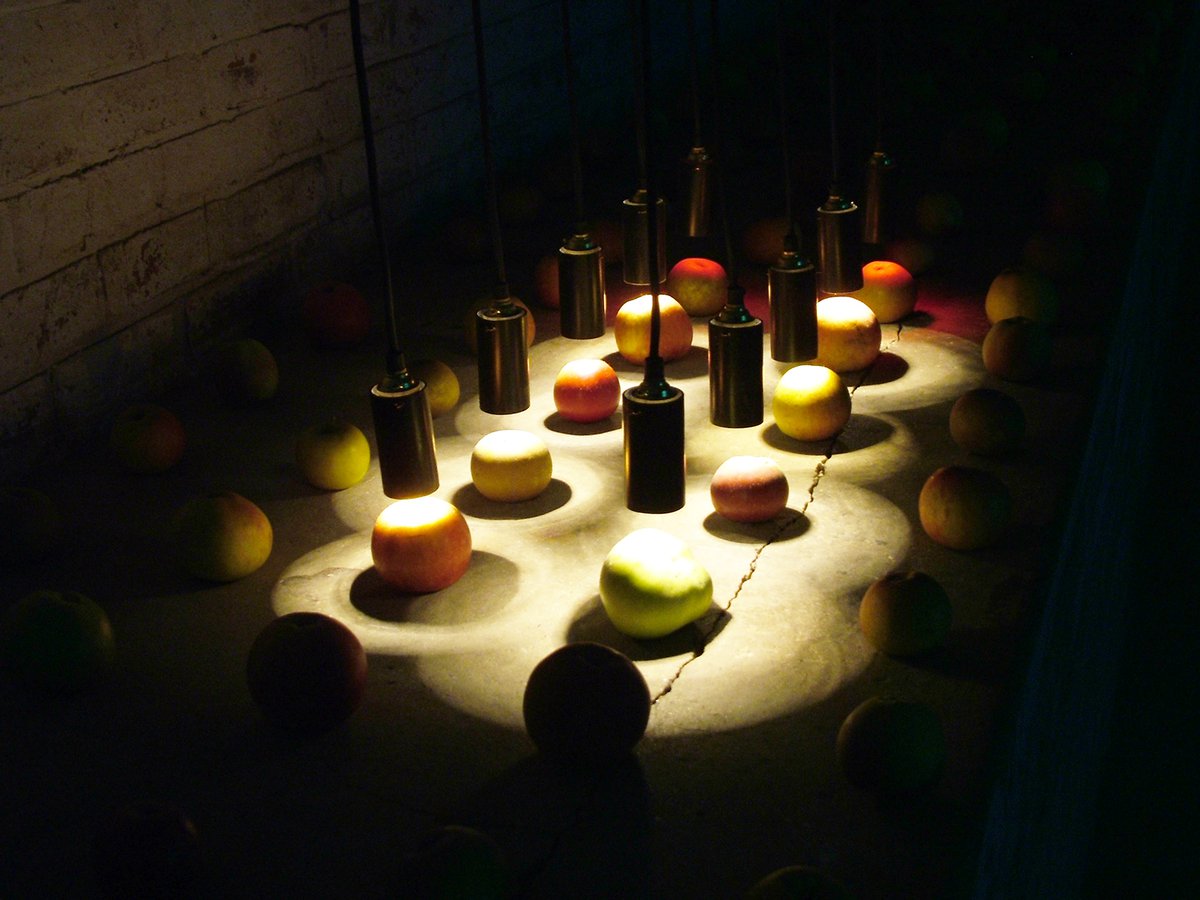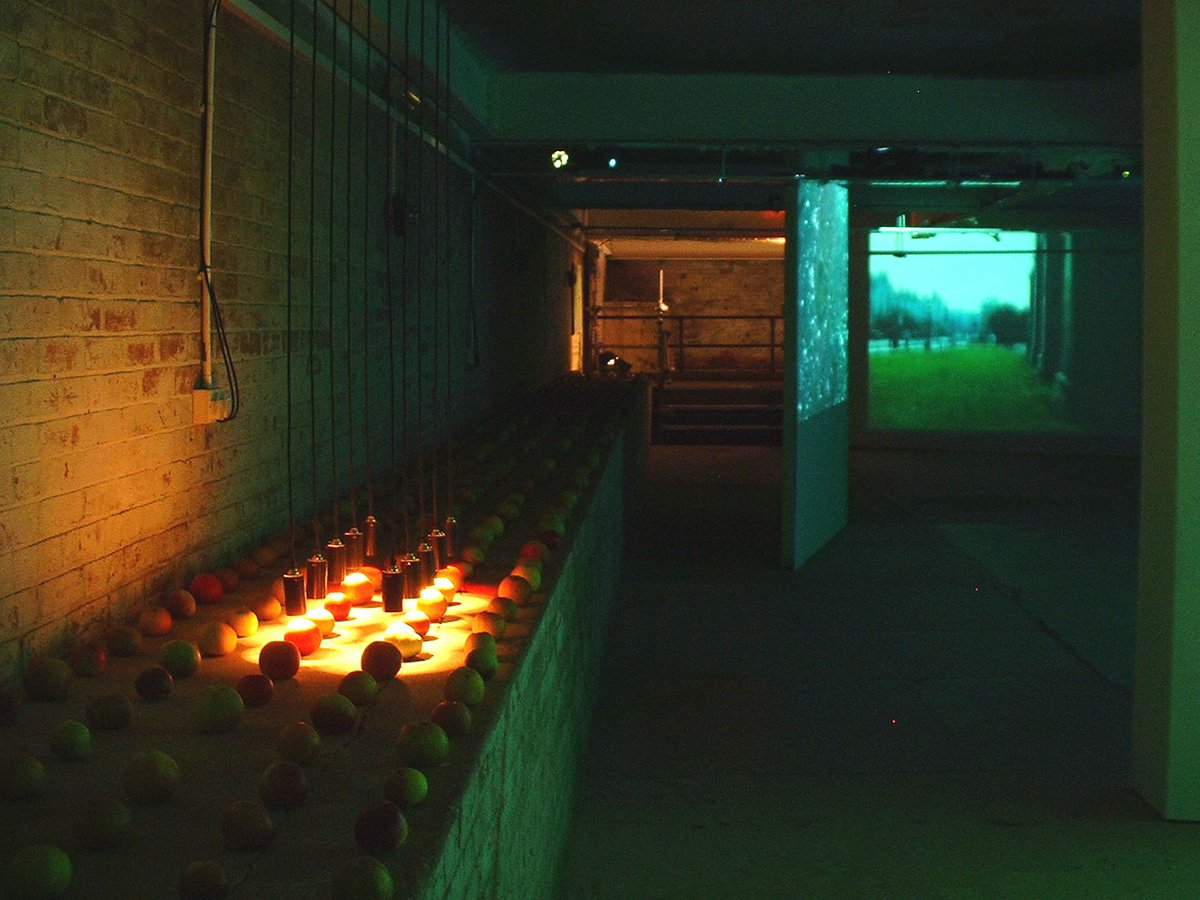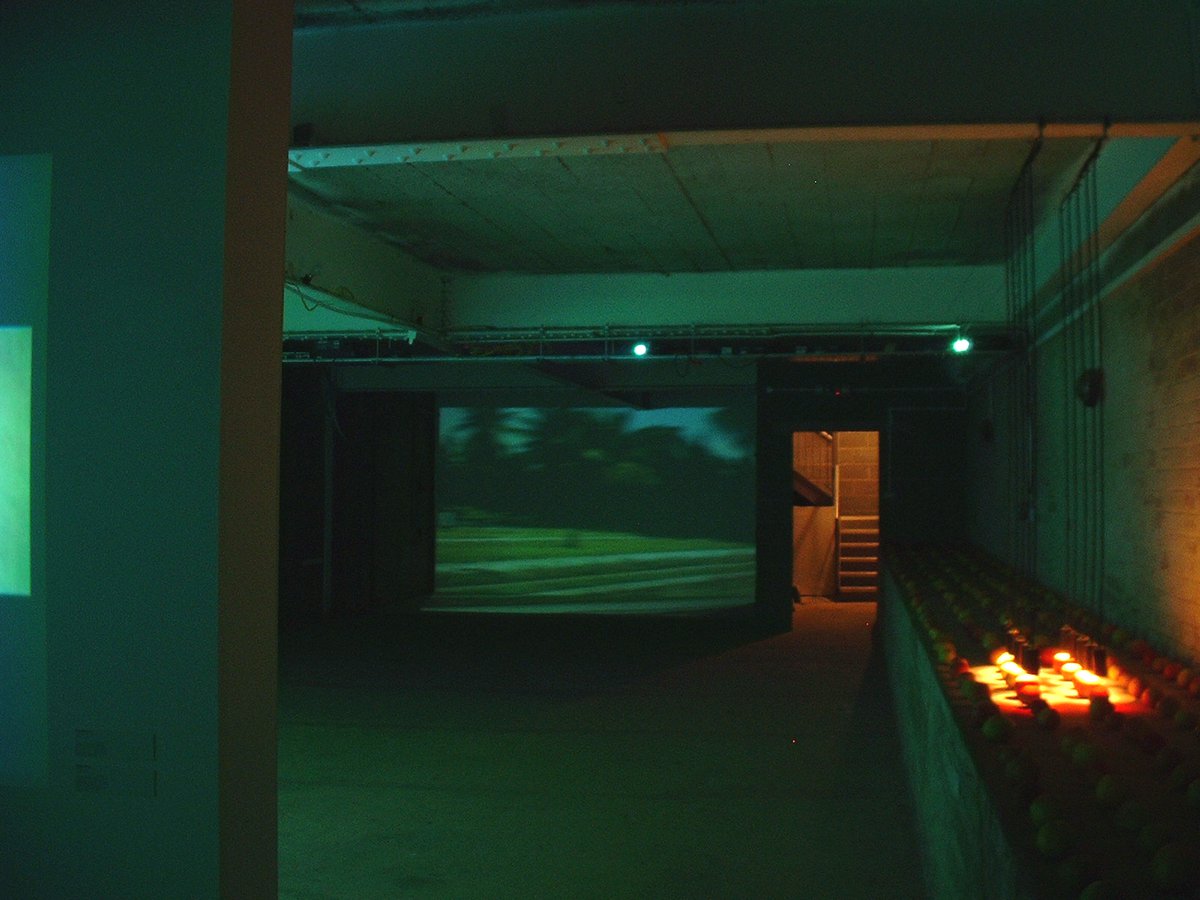The Lost Applefield (2005)
For many hundred years and beyond its boundaries, England was famous as an "apple country". Songs, stories and sayings, food, drink and recipes, professions and names, as well as the layout and the appreciation of the English landscape refer to the presence of apples and orchards. However, since about 30 years this image has changed dramatically leading to the loss of the fruit as well as its space...
As part of the art and architecture exhibition Utilitarian Dreams Brighton, Katrin (assisted by Michael Aling) mounted a temporary installation using 700 English apples from Kent, purpose-made electrical light fittings and lightbulbs in two colours.
As part of the art and architecture exhibition Utilitarian Dreams Brighton, Katrin (assisted by Michael Aling) mounted a temporary installation using 700 English apples from Kent, purpose-made electrical light fittings and lightbulbs in two colours.

There is a need to raise awareness that our current food system leads to biodiversity loss.
2000 apple varieties are on the National Fruit Collection Register as being grown in the UK. But, according to Friends of the Earth's Apple Survey 2005, only 28 varieties (1.4 %) are being sold at the very most if local distribution channels and farmers' markets are included. On average and mainly through supermarkets, only 5 varieties are being sold in the UK (0.25%).
Farmers tend to stop growing apple trees if they can't sell the apples.
In the proportional installation, the 28 apple varieties are lit with white light. The 5 apple varieties are lit with pink light.
Farmers tend to stop growing apple trees if they can't sell the apples.
In the proportional installation, the 28 apple varieties are lit with white light. The 5 apple varieties are lit with pink light.

The minute proportion of apple varieties available in British markets (28) and supermarkets (5) was compared to all British apple varieties (2000).
A very large number of locally sourced, ripe apples was laid out regularly on a 35 x 1 m concrete plinth in the (underground) exhibition venue. They smelled bautifully, shimmered in the dark and could be eaten during the exhibition. Around the plinth's centre, a small proportion of the apples was lit brightly to tell the story of apple varieties lost recently in the UK.

The installation used about 700 English apples sourced locally that could be eaten during the exhibition.
THE LOST APPLEFIELD
location: Brighton, Great Britain
dates: 2005
client: Utilitarian Dreams Brighton exhibition as part of The Brighton Film Festival
funding: Lighthouse (UK Arts Council)
B&V team: Katrin Bohn, Michael Aling, André Viljoen
collaborators: Yuneikys Villalonga (lead curator, Havana, Cuba) / Thomas Müller, Babett Hellmann (apple logistics, London)
supporters: local farmers of the Peckham Farmers' Market / architecture students at the University of Brighton
links:
the Brighton Film Festival catalogue / the lead curator on the Utilitarian Dreams Brighton exhibition
location: Brighton, Great Britain
dates: 2005
client: Utilitarian Dreams Brighton exhibition as part of The Brighton Film Festival
funding: Lighthouse (UK Arts Council)
B&V team: Katrin Bohn, Michael Aling, André Viljoen
collaborators: Yuneikys Villalonga (lead curator, Havana, Cuba) / Thomas Müller, Babett Hellmann (apple logistics, London)
supporters: local farmers of the Peckham Farmers' Market / architecture students at the University of Brighton
links:
the Brighton Film Festival catalogue / the lead curator on the Utilitarian Dreams Brighton exhibition










